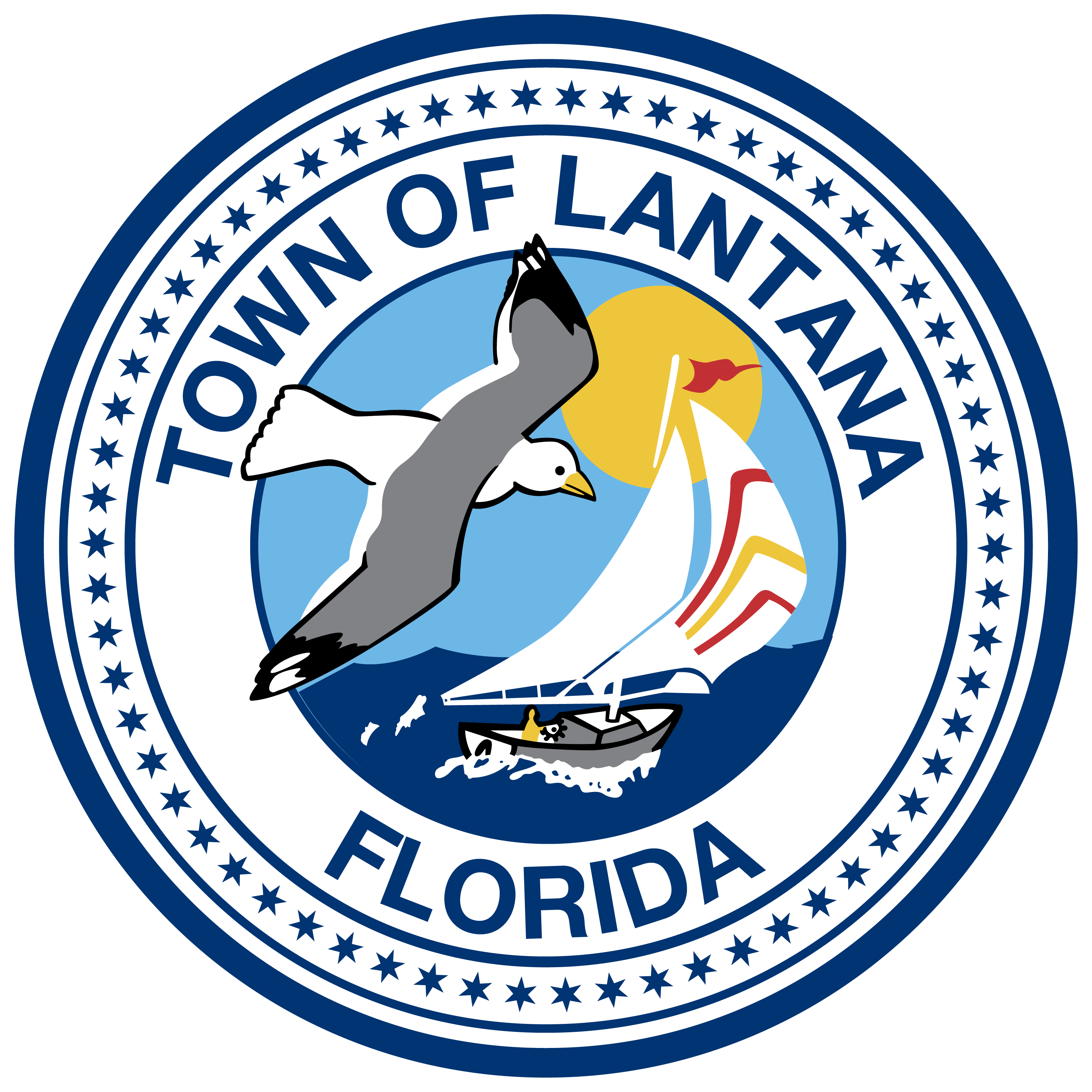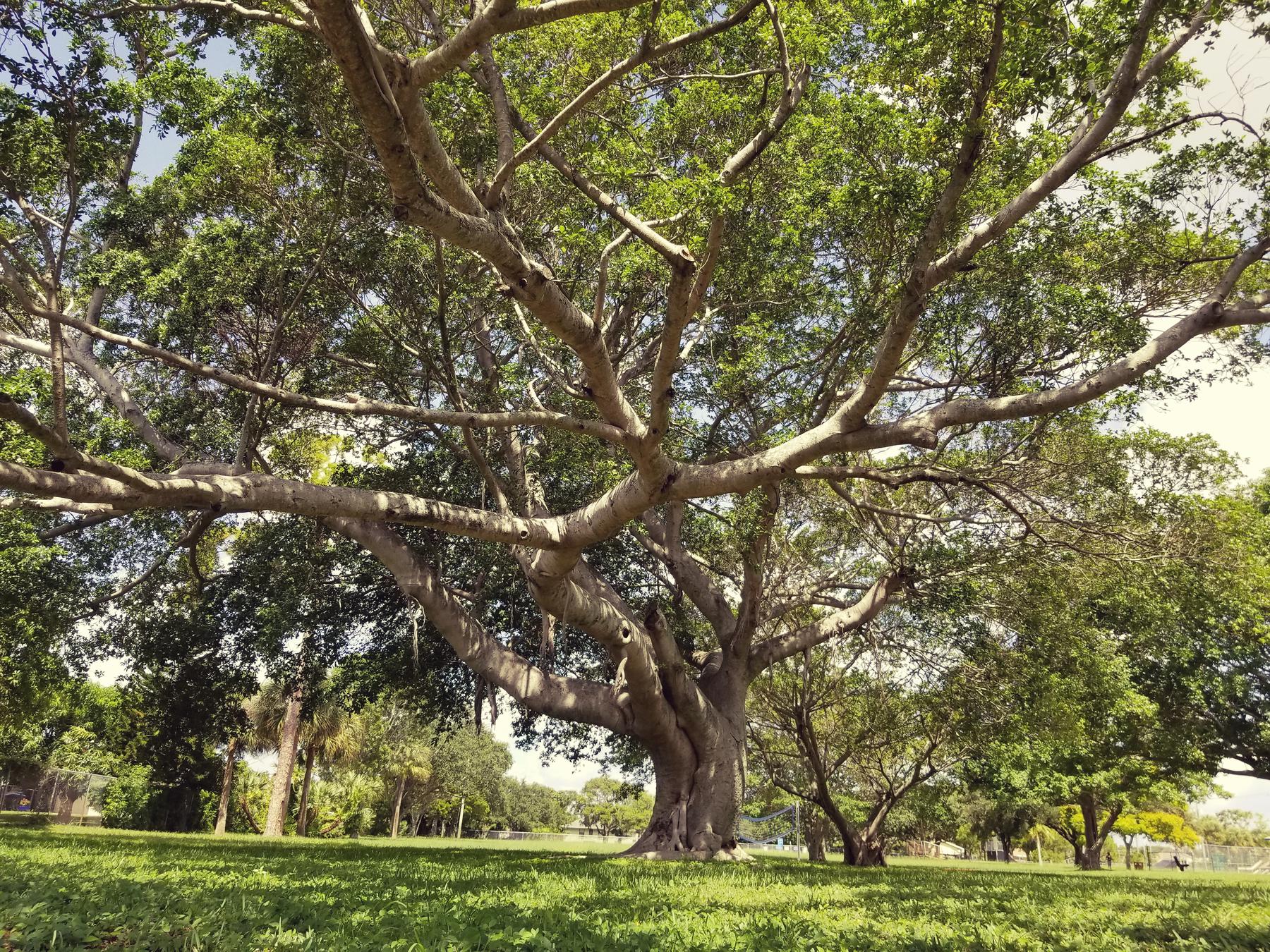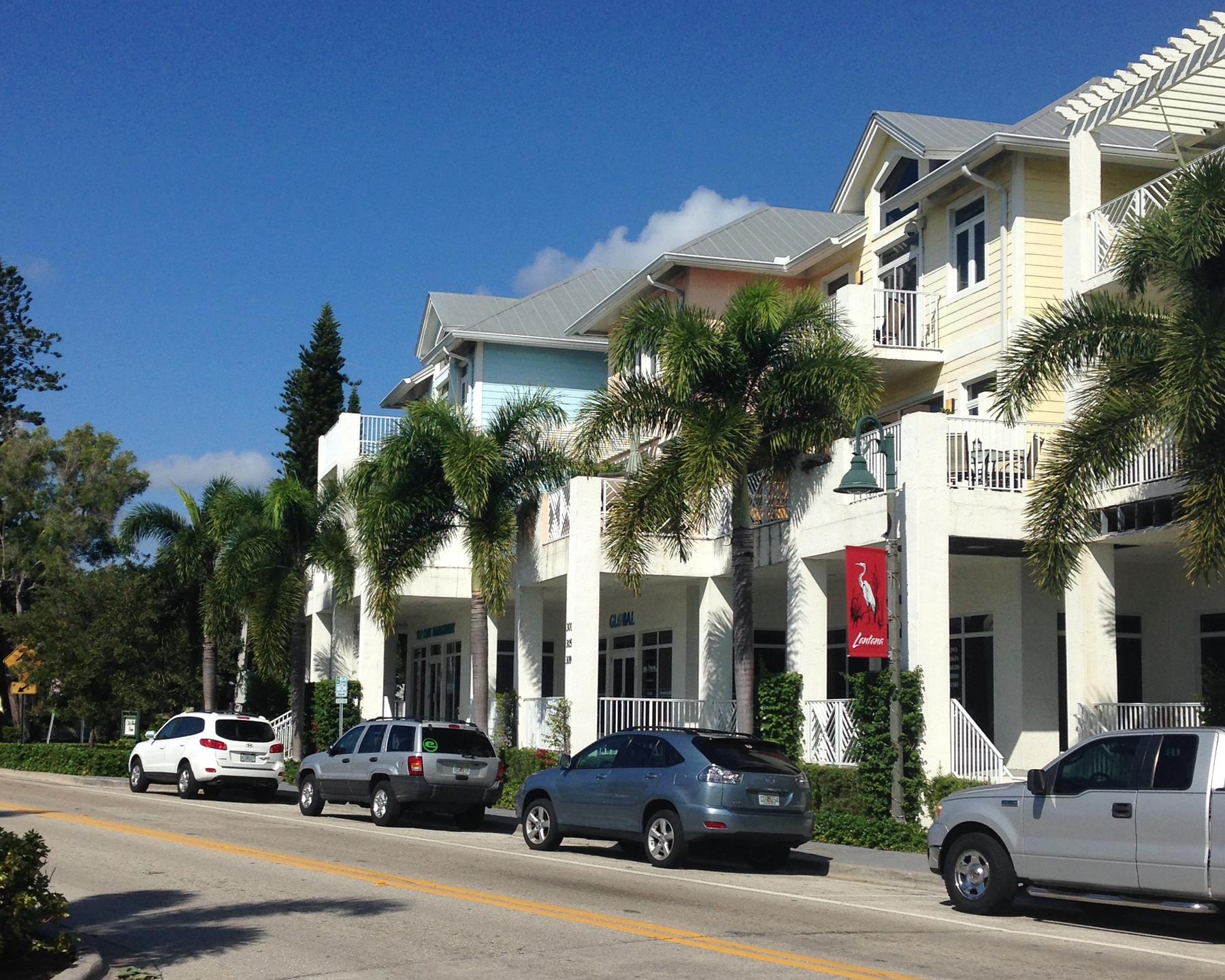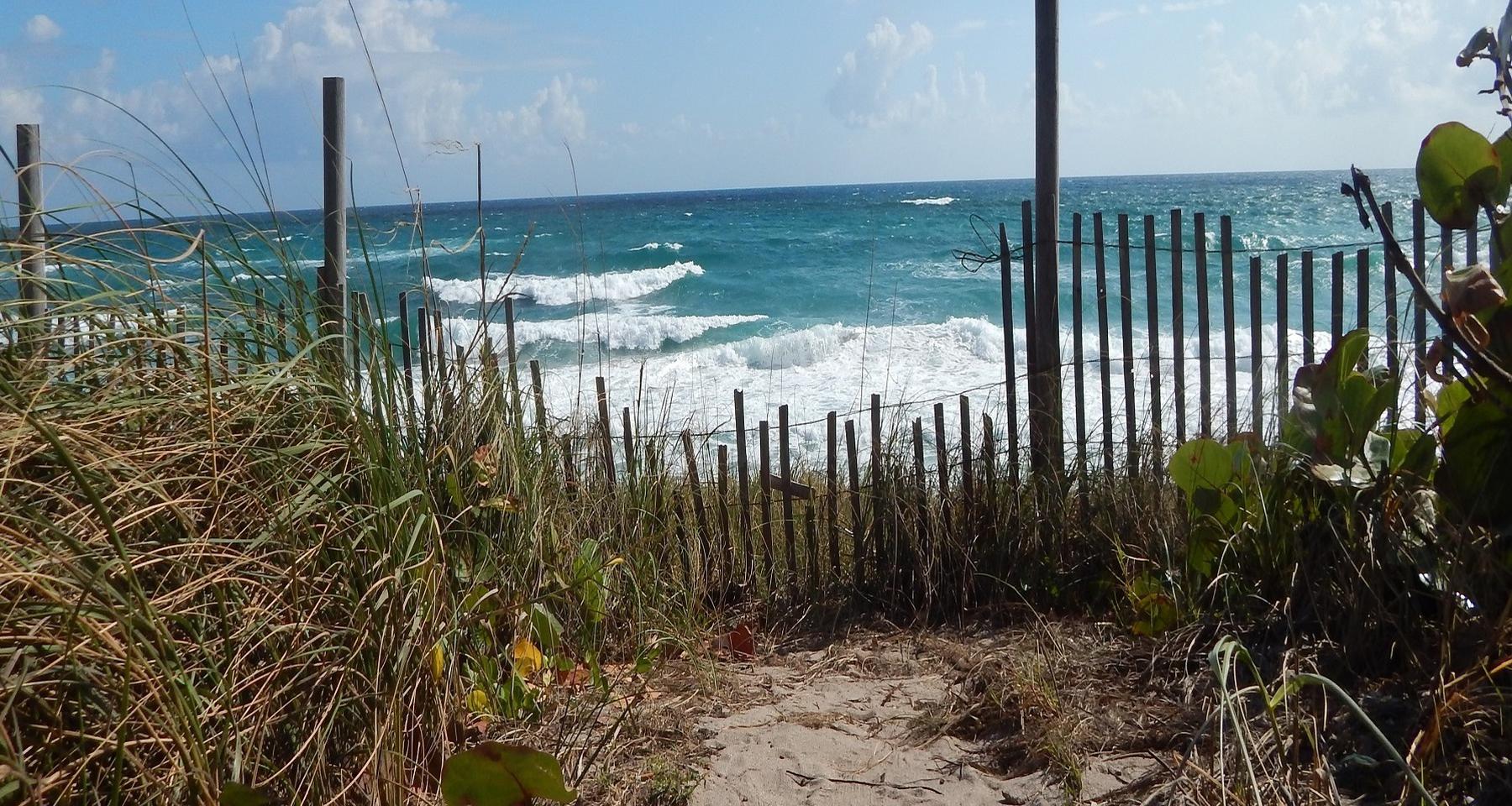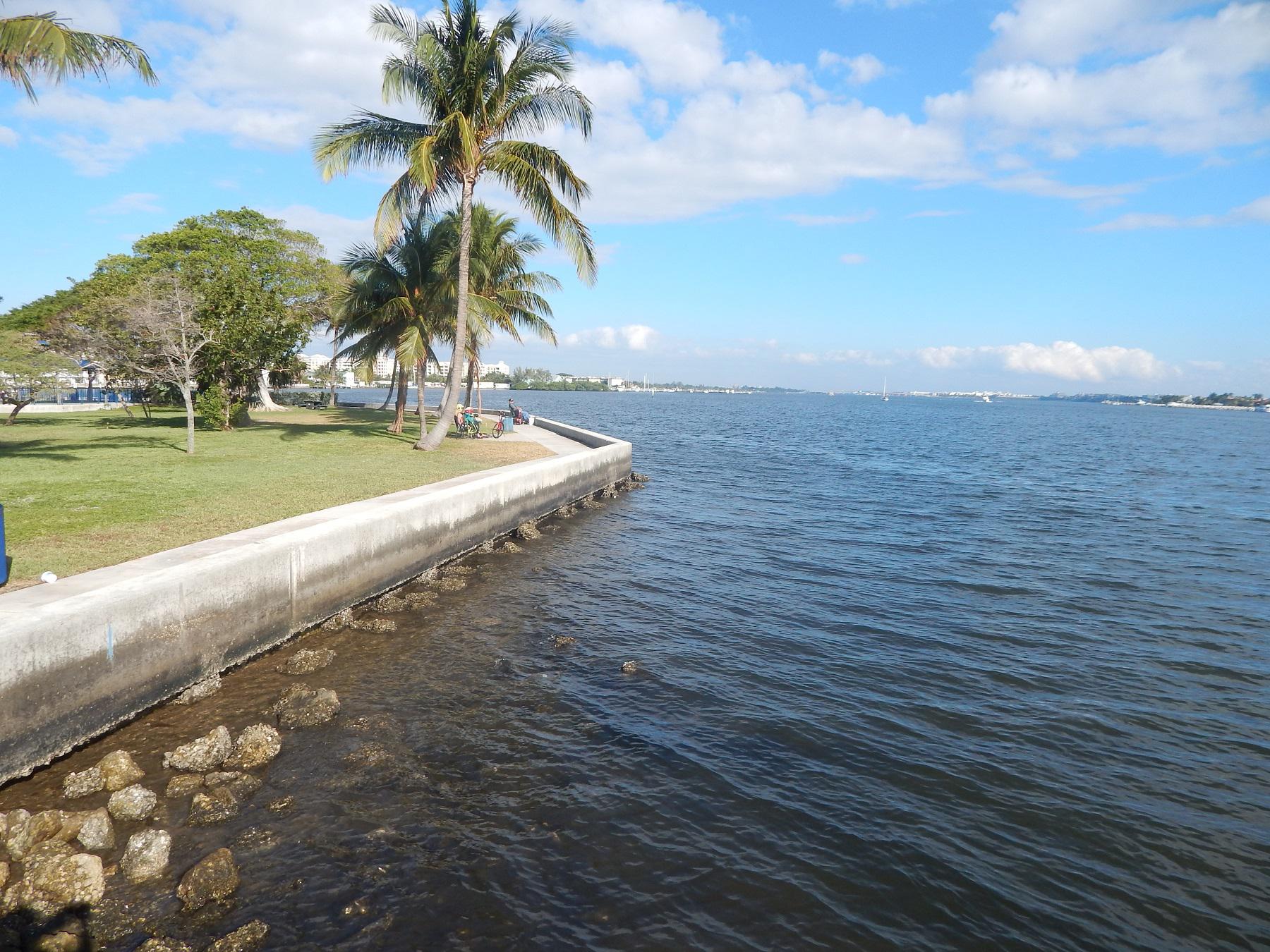Annual Water Quality Report
Dear Customers:
We are pleased to present to you this year’s Annual Drinking Water Quality Report. This report is designed to inform you about the quality water and services we deliver to you every day. Our constant goal is to provide you with a safe and dependable supply of drinking water. We want you to understand the efforts we make to continually improve the water treatment process and protect our water resources. We are committed to ensuring the quality of your water.
This report shows our water quality results and what they mean. The Town of Lantana routinely monitors for contaminants in your drinking water according to Federal and State laws, rules, and regulations. Except where indicated otherwise, this report is based on the results of our monitoring for the period January 1, 2022 to December 31, 2022. (Data obtained before January 1, 2022 and reported in this report is from the most recent testing done in accordance with the laws, rules, and regulations). The Environmental Protection Agency (EPA) requires monitoring of over 80 drinking water contaminants. Those contaminants listed in the table are the only contaminants detected in your drinking water.
Where Does Our Water Come From? The Town of Lantana draws its water from the East Coast Surficial Aquifer System. An aquifer is an underground geologic formation where water is stored. These aquifers extend from a few feet to approximately 200 feet below the land surface. The water is pumped from the aquifers to the land surface by ten shallow wells and is transported to the water treatment plant. At the plant, the water is treated with chlorine, aerated to remove natural gases, and ammonia is added to form chloramines. The water is then filtered to remove suspended particles, fine inorganic and organic materials. Before entering the distribution system, the treated water is injected with Zinc Orthophosphate for corrosion control.
Definition of Terms in Table
In the table, you may find unfamiliar terms and abbreviations. To help you better understand these terms, we’ve provided the following definitions:
• Action Level (AL): The concentration of a contaminant which, if exceeded, triggers treatment or other requirements that a water system must follow.
• Maximum Contaminant Level (MCL): The highest level of a contaminant that is allowed in drinking water. MCLs are set as close to the MCLGs as feasible using the best available treatment technology.
• Maximum Contaminant Level Goal (MCLG): The level of a contaminant in drinking water below which there is no known or expected risk to health. MCLGs allow for a margin of safety.
• Maximum Residual Disinfectant Level (MRDL): The highest level of a disinfectant allowed in drinking water. There is convincing evidence that addition of a disinfectant is necessary for control of microbial contaminants.
• Maximum Residual Disinfectant Level Goal (MRDLG): The level of a drinking water disinfectant below which there is no known or expected risk to health. MRDLGs do not reflect the benefits of the use of disinfectants to control microbial contaminants.
• NA: “Not Applicable”, does not apply.
• Parts per million (ppm): One part by weight of analyte to 1 million parts by weight of the water sample.
• Parts per billion (ppb): One part by weight of analyte to 1 billion parts by weight of the water sample.
• Picocurie per liter (pCi/L): Measure of the radioactivity in water.
• Treatment Technique (TT): A required process intended to reduce the level of a contaminant in drinking water.
• Level 2 Assessment: A Level 2 assessment is a very detailed study of the water system to identify potential problems and determine (if possible) why an E. coli MCL violation has occurred and/or why total coliform bacteria have been found in our water system on multiple occasions.
Why Are Contaminants Present in Drinking Water?
The sources of drinking water (both tap water and bottled water) include rivers, lakes, streams, ponds, reservoirs, springs, and wells. As water travels over the surface of the land or through the ground, it dissolves naturally occurring minerals and, in some cases, radioactive material, and can pick up substances resulting from the presence of animals or from human activity. Contaminants that may be present in source water include:
Microbial contaminants, such as viruses and bacteria, may come from sewage treatment plants, septic systems, agricultural livestock operations, and wildlife.Inorganic contaminants, such as salts and metals, can be naturally-occurring or result from urban stormwater runoff, industrial or domestic wastewater discharges, oil and gas production, mining, or farming.
Pesticides and herbicides may come from a variety of sources such as agriculture, urban stormwater runoff, and residential uses.
Organic chemical contaminants, including synthetic and volatile organic chemicals, are by-products of industrial processes and petroleum production, and can also come from gas stations, urban stormwater runoff, and septic systems.
Radioactive contaminants can be naturally occurring or be the result of oil and gas production and mining activities.
To ensure that tap water is safe to drink, the EPA prescribes regulations, which limit the amount of certain contaminants in water provided by public water systems. The Food and Drug Administration (FDA) regulations establish limits for contaminants in bottled water which must provide the same protection for public health.
Drinking water, including bottled water, may reasonably be expected to contain at least small amounts of some contaminants. The presence of contaminants does not necessarily indicate that the water poses a health risk. More information about contaminants and potential health effects can be obtained by calling the Environmental Protection Agency’s Safe Drinking Water Hotline at 1-800-426-4791.
Additional Information
If you have any questions about this report or your water quality please
contact Jerry L. Darr, Assistant Utility Director of Utilities at (561) 540- 5750, 510 W. Pine Street, Lantana, Florida 33462. We encourage our valued customers to be informed about their water utility. Also, the Town of Lantana conducts regular meetings on the 2nd and 4th Monday of every month at 7:00 p.m. To receive meeting schedules and itineraries, contact Town Hall at (561) 540-5000, 500 Greynolds Circle, Lantana, Florida. 33462.
Source Water Assessment
In 2022, the Department of Environmental Protection performed a Source Water Assessment on our system. The assessment was conducted to provide information about any potential sources of contamination in the vicinity of our wells. There are five potential sources of contamination identified for this system with low to moderate susceptibility levels. The assessment results are available on the FDEP Source Water Assessment and Protection Program website at https://fldep.dep.state.fl.us/swapp.
Health Information
If present, elevated levels of lead can cause serious health problems, especially for pregnant women and young children. Lead in drinking water is primarily from materials and components associated with service lines and home plumbing. The Town of Lantana is responsible for providing high quality drinking water but cannot control the variety of materials used in plumbing components. When your water has been sitting for several hours, you can minimize the potential for lead exposure by flushing your tap for 30 seconds to 2 minutes before using water for drinking or cooking. If you are concerned about lead in your water, you may wish to have your water tested. Information on lead in drinking water, testing methods, and steps you can take to minimize exposure is available from the Safe Drinking Water Hotline or at http://www.epa.gov/safewater/lead.
Some people may be more vulnerable to contaminants in drinking water than the general population. Immuno-compromised persons such as persons with cancer undergoing chemotherapy, persons who have undergone organ transplants, people with HIV/AIDS or other immune system disorders, some elderly, and infants can be particularly at risk for infections. These people should seek advice about drinking water from their health care providers. EPA/CDC guidelines on appropriate means to lessen the risk of infection by Cryptosporidium and other microbiological contaminants are available from the Safe Drinking Water Hotline (800-426-4791).
CCR Health Effects Language:
Microbial Contaminants
Total Coliform Bacteria. Coliforms are bacteria that are naturally present in the environment and are used as an indicator that other, potentially harmful, waterborne pathogens may be present or that a potential pathway exists through which contamination may enter the drinking water distribution system. We found coliforms indicating the need to look for potential problems in water treatment or distribution. When this occurs, we are required to conduct assessment(s) to identify problems and to correct any problems that were found during these assessments.
E. coli are bacteria whose presence indicates that the water may be contaminated with human or animal wastes. Human pathogens in these wastes can cause short-term effects, such as diarrhea, cramps, nausea, headaches, or other symptoms. They may pose a greater health risk for infants, young children, the elderly, and people with severely compromised immune systems.
Stage 1 Disinfectants and Disinfection By-Products
Chlorine. Some people who use water containing chlorine well in excess of the MRDL could experience irritating effects to their eyes and nose. Some people who drink water containing chlorine well in excess of the MRDL could experience stomach discomfort.
Stage 2 Disinfection By-Products
Copper. Copper is an essential nutrient, but some people who drink water containing copper in excess of the action level over a relatively short amount of time could experience gastrointestinal distress. Some people who drink water containing copper in excess of the action level over many years could suffer liver or kidney damage. People with Wilson's Disease should consult their personal doctor.
Lead. Infants and children who drink water containing lead in excess of the action level could experience delays in their physical or mental development. Children could show slight deficits in attention span and learning abilities. Adults who drink this water over many years could develop kidney problems or high blood pressure.
Level 2 Assessment
E. coli are bacteria whose presence indicates that the water may be contaminated with human or animal wastes. Human pathogens in these wastes can cause short-term effects, such as diarrhea, cramps, nausea, headaches, or other symptoms. They may pose a greater health risk for infants, young children, the elderly, and people with severely compromised immune systems. We found E. coli bacteria, indicating the need to look for potential problems in water treatment or distribution. When this occurs, we are required to conduct assessments to identify problems and to correct any problems that were found during these assessments.
We had an E. coli positive repeat sample following a total coliform positive routine sample. We were required to complete a Level 2 assessment because we found E. coli in our water system. In addition, we were required to take 5 corrective actions and we completed all 5 of these actions.
On March 3, March 13, April 14, and April 20 E. coli tested present at two production wells. The source was unidentified. The contamination has been addressed as prescribed by the requirements of the Ground Water Rule.
Water Quality Table
Microbiological Contaminants | |||||||
Contaminant and Unit of Measure |
Dates of Sampling (mo./yr.) |
TT Violation |
Result |
MCLG |
TT |
Likely Source of Contamination | |
Total Coliform Bacteria | November/2023 | Y | Positive | N/A | TT | Naturally present in the environment | |
Contaminant and Unit of Measure |
Dates of Sampling (mo./yr.) | MCL Violation Y/N | Total Number of Positive Samples for the Year |
MCLG |
MCL |
Likely Source of Contamination | |
E. coli (at the ground water source) |
July/2023 |
Y |
1 |
0 | Routine and repeat samples are total coliform positive and either is E. coli positive or system fails to take repeat samples following E. coli positive routine sample or system fails to analyze total coliform positive repeat sample for E. coli |
Human and animal fecal waste | |
Inorganic Contaminants | |||||||
Contaminant and Unit of Measure |
Dates of Sampling (mo./yr.) | MCL Violations Y/N |
Level Detected | Range of Results |
MCLG |
MCL |
Likely Source of Contamination |
Nitrate (ppm) (as Nitrogen) | November/2023 | N | 0.38 | NA | 10 | 10 | Runoff from fertilizer use; leaching from septic tanks; sewage; erosion of natural deposits |
Nitrite (ppm) (as Nitrogen) |
November/2023 |
N |
0.39 |
NA |
1 |
1 | Runoff from fertilizer use; leaching from septic tanks; sewage; erosion of natural deposits |
Arsenic (ppb) |
November/2023 |
N |
0.37 |
NA |
0 |
10 | Erosion of natural deposits; runoff from orchards; runoff from glass and electronics production wastes |
Fluoride (ppm) |
November/2023 |
N |
0.13 |
NA |
4 |
4 | Erosion of natural deposits; discharge from fertilizer and aluminum factories. Water additive which promotes strong teeth when at the optimum level of 0.7 ppm |
Sodium (ppm) |
November/2023 |
N |
100 |
NA |
NA |
160 | Saltwater intrusion, leaching from soil |
Total Phosphorus (ppm) (as Phosphorus) |
November/2023 |
N |
0.20 |
NA |
NA |
NA | Runoff from fertilizer use; leaching from septic tanks; sewage; erosion of natural deposits |
Stage 1 Disinfectant/Disinfection By- Products | |||||||
For Chlorine or Chloramines the level detected is the highest running average (RAA), computed quarterly, of monthly averages of all samples collected. The range of results is the range of results of all the individual samples collected during the past year. | |||||||
Disinfectant or Contaminant and Unit of Measure |
Dates of Sampling (mo./yr.) | MCL or MRDL ViolationsY/N |
Level Detected |
Range of Results |
MCLG or MRDLG | MCL or MRDL |
Likely Source of Contamination |
Chlorine and Chloramines (ppm) | January-December/2023 | Y | 4.08 | 2.40-5.50 | 4 | 4 | Water additive used to control microbes |
Stage 2 Disinfectant/Disinfection By-Products | |||||||
Disinfectant or Contaminant and Unit of Measure |
Dates of Sampling (mo./yr.) | MCL or MRDL ViolationsY/N |
Level Detected | Range of Results |
MCLG or MRDLG | MCL or MRDL |
Likely Source of Contamination |
Haloacetic Acids (five) (HAA5) (ppb) | July/2023 | N | 33.65 | 27.80-33.65 | NA | MCL= 60 | By-product of drinking water disinfection |
TTHM [Total Trihalomethanes] (pbb) | July/2023 | N | 20.83 | 19.90-20.83 | NA | MCL=80 | By-product of drinking water disinfection |
Lead and Copper (Tap Water) | |||||||
Contaminant and Unit of Measure | Dates of Sampling (mo./yr.) | AL Exceeded Y/N | 90th Percentile Results | No. of Samples Exceeding the AL | MCLG | AL | Likely Source of Contamination |
Copper (tap water) (ppm) | June/2023 November/2023 | N N | 0.79 0.83 |
0 |
1.3 |
1.3 | Corrosion of household plumbing systems; erosion of natural deposits; leaching from wood preservatives |
Lead (tap water) (ppb) | June/2023 November/2023 | N | 1.00 1.00 | 0 | 0 | 15 | Corrosion of household plumbing systems; erosion of natural deposits |
